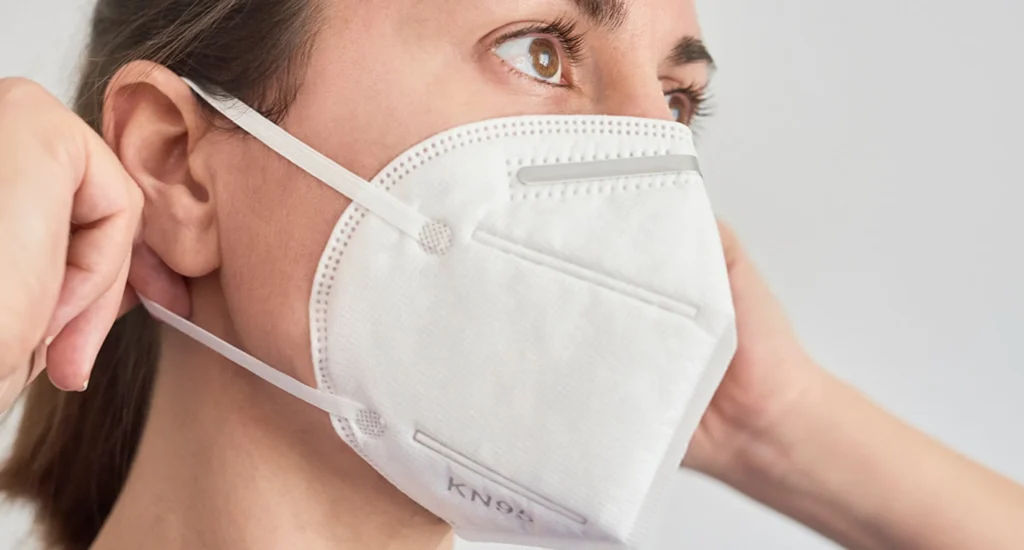Face masks have become essential tools for personal protection, especially in environments where airborne particles or pathogens pose risks. Disposable masks like 3-ply face masks, KN95 face mask, and surgical-style coverings are widely used due to their convenience and filtration capabilities. However, a common question arises: Can expired disposable masks still be used safely? This article explores the science behind mask expiration dates, potential risks, and practical guidelines for using older masks.

Why Do Masks Have Expiration Dates?
Disposable masks are designed with materials that degrade over time, even when stored properly. Manufacturers assign expiration dates (typically 2–5 years from production) based on:
1. Material Stability:
- The electrostatic charge in melt-blown polypropylene (a key filtering layer in 3-ply and KN95 masks) weakens over time, reducing filtration efficiency.
- Elastic ear loops or straps may dry out, crack, or lose elasticity, compromising fit.
2. Hygiene Concerns:
- Prolonged storage in humid or unclean environments may lead to microbial growth on mask surfaces.
3. Regulatory Compliance:
- Expiration dates ensure masks meet certified performance standards (e.g., NIOSH for KN95s, ASTM for surgical masks) at the time of sale.
Are Expired Masks Still Effective?
The answer depends on the type of mask, storage conditions, and intended use:
1. 3-Ply Disposable Face Masks
These masks consist of three layers:
- Outer hydrophobic layer (blocks droplets)
- Middle melt-blown filter (traps particles)
- Inner absorbent layer (catches exhaled moisture)
Post-Expiration Risks:
- Reduced filtration efficiency due to degraded electrostatic charge.
- Weakened structure (e.g., looser pleats) may allow gaps around the face.
- If stored in damp conditions, mold or bacteria could colonize the material.
When to Use:
- Short-term use in low-risk settings (e.g., brief errands) may still offer some protection if the mask is intact. Avoid relying on expired 3-ply masks in high-risk medical environments.
2. KN95 Respirators
KN95 masks are regulated to filter ≥95% of 0.3-micron particles. Their expiration dates are stricter due to the critical role of their electrostatic filter layer.
Post-Expiration Risks:
- A 2020 study by ECRI Institute found that expired KN95s retained ~94% filtration efficiency (vs. 95% when new), but fit issues were more common due to degraded straps.
- Compromised straps or nose clips may create leaks, rendering the mask ineffective.
When to Use:
- In emergencies, expired KN95s can serve as a backup if they pass a seal check (no gaps when inhaling/exhaling). Replace them as soon as fresh stock is available.
3. Surgical-Style Masks
Similar to 3-ply masks but often held to higher manufacturing standards (e.g., ASTM F2100).
Post-Expiration Risks:
- Fluid resistance (critical for blocking splashes) may decline over time.
- Ear loops or ties may break during use.
How to Assess an Expired Mask
Before using an expired mask, conduct a quick inspection:
1. Check Physical Integrity:
- No tears, holes, or frayed edges.
- Straps/ear loops are elastic and secure.
2. Evaluate Storage Conditions:
- Masks stored in cool, dry, sealed packaging fare better than those exposed to humidity, heat, or sunlight.
3. Perform a Fit Test:
- For respirators like KN95s, ensure a tight seal by cupping your hands around the edges while exhaling. If air leaks, discard the mask.
When to Avoid Expired Masks Entirely
Discard expired masks if:
- They were stored in dirty or humid environments (e.g., basements, bathrooms).
- You notice discoloration, odors, or visible mold.
- You’re in a high-risk setting (e.g., hospitals, crowded indoor spaces).
Regulatory Exceptions During Shortages
During the COVID-19 pandemic, organizations like the FDA temporarily permitted the use of expired masks due to supply shortages. However, such exceptions were conditional:
- Masks had to pass performance testing.
- Users were advised to prioritize intact, well-stored masks.
Always check for updated guidelines from health authorities like the CDC or WHO during public health crises.
Alternatives to Expired Masks
If your disposable masks are expired or damaged, consider:
- Cloth Masks: Reusable and washable, though less effective than respirators.
- New Respirators: Purchase NIOSH-approved N95s or equivalent masks.
- Double-Masking: Pair a cloth mask with a surgical-style mask for better fit and filtration.
While expired disposable masks may retain partial efficacy if stored properly, they should not be relied upon in high-risk scenarios. Prioritize masks within their expiration dates for optimal protection, and always inspect older masks for damage or contamination. In emergencies, expired KN95s or 3-ply masks can serve as temporary solutions—but replace them at the earliest opportunity.
By understanding the limitations of expired masks, you can make informed decisions to protect yourself and others effectively.


